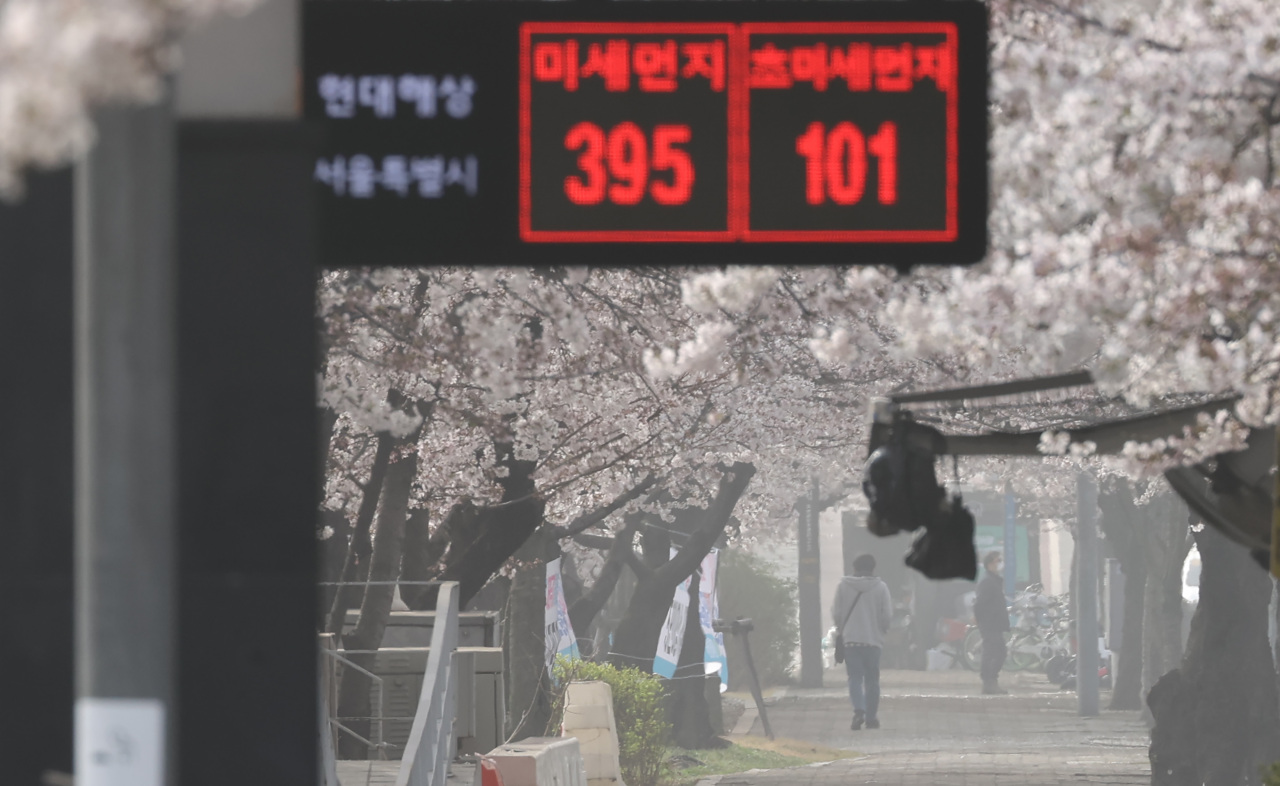 |
An electronic board in Seoul shows that levels of fine particulate matter reached 395 micrograms per cubic meter of air and ultrafine particulate matter reached 101 micrograms per cubic meter on Monday. A yellow dust warning was issued for Seoul and for most of the country. (Yonhap) |
Thick yellow dust originating from China’s Inner Mongolia swept through most of South Korea on Monday, prompting the Environment Ministry to issue a nationwide caution -- the third-highest alert level in a four-tier system.
The nation’s weather agency issued both yellow dust warnings and ultrafine dust alerts earlier on Monday.
A yellow dust alert is issued when average fine dust levels stay above 300 micrograms per cubic meter for more than two hours.
This is when the sky is yellow, and dust visibly settles on vehicles and equipment.
The yellow dust storm will continue until Tuesday, the Korea Meteorological Agency said.
According to the weather agency, yellow dust that originated March 26 from the Mongolian Plateau in Mongolia and China blew over to Korea due to strong winds, affecting Seoul and the country’s central region.
Yellow dust alerts were issued for all of the Seoul metropolitan area, excluding the northern region; as well as for the southern, inland part of Gangwon Province; for the Chungcheong region; for the western part of the Jeolla provinces; and for the western part of North Gyeongsang Province.
Yellow dust was visible in most of the country.
The KMA said additional yellow dust warnings might be issued for the southern regions.
A health and environment research institute under the Seoul city government issued advisories at 5 a.m. both for fine dust (PM10) and ultrafine dust (PM2.5)
The former is issued when fine dust levels stay above 300 micrograms per cubic meter of air for over two hours, and the latter when they stay above 75 micrograms per cubic meter for two hours.
Fine dust consists of fine particulate matter, or particles in the air smaller than 10 micrometers in diameter. Particles smaller than 2.5 micrometers in diameter are classified as ultrafine dust.
By Kim So-hyun (
sophie@heraldcorp.com)








![[Today’s K-pop] Blackpink’s Jennie, Lisa invited to Coachella as solo acts](http://res.heraldm.com/phpwas/restmb_idxmake.php?idx=644&simg=/content/image/2024/11/21/20241121050099_0.jpg)